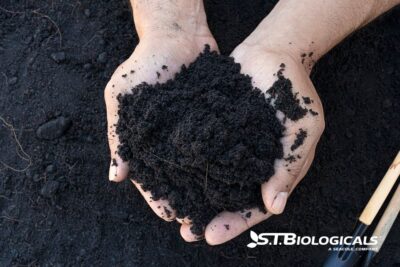Regenerative agriculture practices like integrated pest management (IPM) and biological control might sound like buzzwords, but they’re practical tools that can transform your farm. These methods are designed to reduce chemical dependency, improve soil health, and boost crop resilience. We’ll show you how they can help you tackle early plant diseases while saving money and protecting your yields.
The Problem with Chemical Dependency
Let’s face it—conventional farming often feels like you’re stuck in a cycle of reacting to problems. A pest shows up, disease spreads, and you reach for chemical pesticides or fungicides to fix it fast. While they work in the short term, they can disrupt your farm’s ecosystem and lead to long-term issues like pest resistance and soil degradation.
Regenerative agriculture flips the script. With IPM, you’re taking a proactive approach—monitoring your fields, understanding pest behavior, and using biological control to prevent problems before they escalate. It’s like setting up a defense team for your crops, so you’re not constantly firefighting. Because we all know those insects are vectors for disease, as well as damaging your crops by chewing and gnawing.
The Power of Biological Control
Biological control is a real game-changer. It uses natural predators such as beneficial insects, microbes, and nematodes to keep pests and diseases in check. These biological control agents work with your farm’s ecosystem, rather than against it, creating a balanced environment that supports healthy crops.
For example, predatory insects like ladybugs can target aphids, while beneficial fungi can suppress soil-borne pathogens. By incorporating these natural allies into your pest management strategy, you’re reducing your reliance on chemical pesticides and fostering a healthier, more resilient farm.
The Benefits of Regenerative Agriculture
Here’s the kicker: Regenerative agriculture practices like IPM and biological control don’t just manage pests. They improve soil health, boost biodiversity, and enhance crop resilience. Healthy soil teeming with beneficial microbes helps plants absorb nutrients and resist stress, reducing the need for chemical inputs.
Plus, these practices can save you money. By cutting down on chemical applications, you’re lowering input costs and increasing your farm’s profitability. And let’s not forget the environmental benefits. Less chemical runoff means cleaner water and healthier ecosystems.
What’s Next?
You don’t have to overhaul your entire operation overnight. Start small by incorporating biological control agents alongside your current methods. Scout your fields, monitor pest populations, and experiment with regenerative practices. Over time, you’ll see the results: fewer outbreaks, healthier plants, and better margins.
At the end of the day, it’s about creating a system that works smarter, not harder. You’re not just farming for this season; you’re building a legacy of productivity and sustainability. To find out how regenerative agriculture would increase your crop resilience, contact our team at ST Biologicals. We’re here to help you succeed. When soil speaks, we listen.

